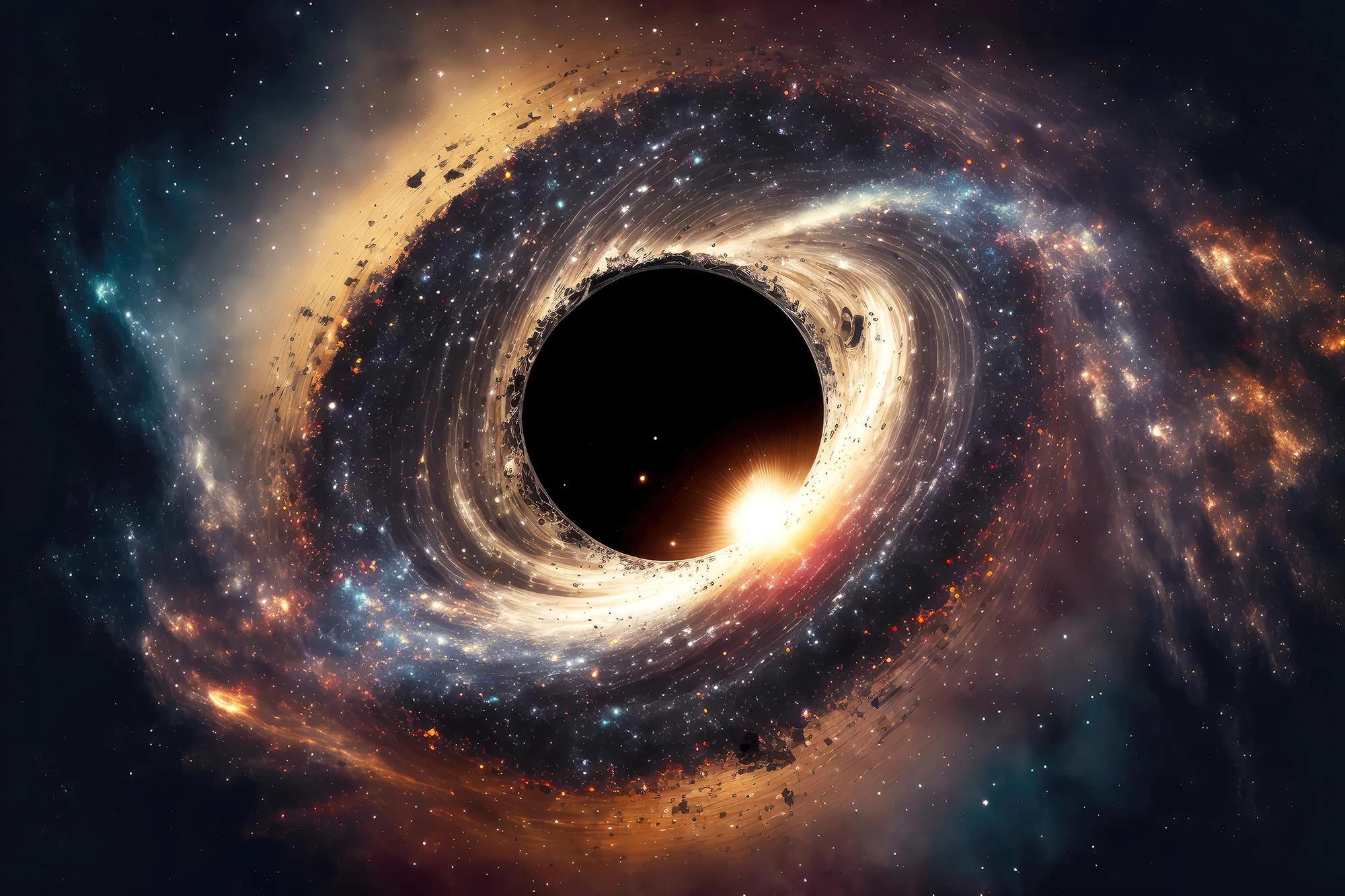A recent study suggests that black holes may have originated as tiny “seeds” at the dawn of the Big Bang. Traditionally, black holes form from the collapse of massive stars, which require time to form, live, die, and eventually collapse into black holes. However, observations made by the James Webb Space Telescope (JWST) indicate that these dark, massive objects could have existed as early as the cosmic dawn, a few hundred million years after the Big Bang, when the first stars and galaxies began to emerge.
A paper published in the Journal of Cosmology and Astroparticle Physics proposes that these giant black holes may have formed much earlier in the universe’s history. In the 1970s, Stephen Hawking suggested that black holes could have been created during the early stages of the Big Bang. He theorized that these primordial black holes might have arisen directly from the intense energy and matter released during the explosion at the universe’s birth. Hawking also speculated that they would slowly dissipate through a process known as Hawking radiation, potentially still detectable today.
Despite extensive surveys, no definitive evidence has been found to confirm the existence of such primordial black holes. If they do exist, they might only represent a tiny fraction of the universe’s total matter. Researchers speculate that these “tiny fraction” black holes could have grown over the course of 100 million years. If they found themselves in dense regions of matter, they might have accumulated enough energy and material to evolve into the supermassive black holes observed by JWST. This theory suggests that black holes could have grown alongside the first stars, rather than after their formation and death, although this remains a hypothesis.










